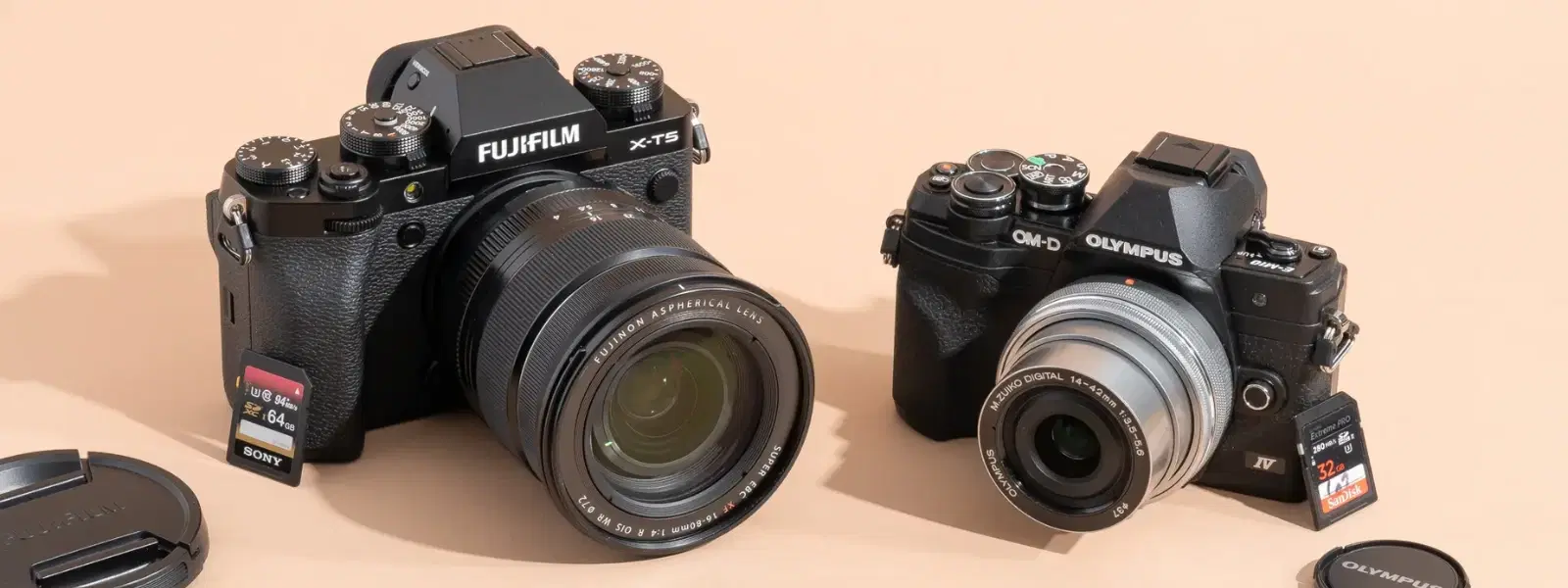
Consumer Electronics
•03 min read
Imagine capturing the intricate details of a distant galaxy or the shimmering beauty of the Milky Way with precision and clarity. Your choice of astrophotography camera plays a pivotal role in this cosmic journey. In this blog, we explore the battle between DSLR and mirrorless systems for astrophotography. Both options have unique strengths, yet the right choice depends on your needs and aspirations.
When selecting a camera for night sky photography, several factors come into focus. Essential features include high ISO performance, long exposure capabilities, and compatibility with astrophotography equipment like sturdy tripods and telescopes. A larger sensor, such as a full-frame, and low noise performance are key for capturing deep sky objects, while ensuring that your camera is compatible with astrophotography lens options, especially wide-angle lenses, can elevate your results.
DSLR for astrophotography remains favoured by many enthusiasts. With an optical viewfinder, these cameras grant a reliable framing experience in low light conditions, while their longer battery life can support extended night shoots. Additionally, the wide range of lenses available makes them a dependable choice for those venturing into deep sky photography. However, DSLRs tend to be bulkier and may show slower live-view performance in low light, aspects that could influence your decision if portability is a priority.
In recent years, mirrorless astrophotography cameras have been gaining popularity. Their compact and lightweight design provides excellent portability for travel and spontaneous shooting sessions. Enhanced electronic viewfinders provide a real-time preview of exposure settings, making it easier to adjust to challenging celestial conditions. Additionally, these cameras deliver superior video capabilities, ideal for hybrid enthusiasts who enjoy capturing both stills and video. On the flip side, shorter battery life means you might need extra power solutions for extended shoots, and some systems still offer fewer lens options compared to traditional DSLRs.
In terms of image quality, both DSLR and mirrorless cameras excel with full-frame sensors that provide impressive results in deep sky photography. The ability to reduce noise and capture a wide dynamic range remains paramount in low light situations. Adjusting settings such as ISO, shutter speed, and aperture is straightforward on both systems, though mirrorless models often feature more customisable settings that can be tailored for astrophotography camera needs. Compatibility with telescopes, mounts, and astrophotography lens options further defines your overall shooting experience.
Price and accessibility also play significant roles. Entry-level models of both DSLR and mirrorless cameras offer substantial value, while professionals might lean towards specific models based on advanced features and performance requirements. Regardless of your budget, selecting the best cameras for astrophotography involves balancing performance with personal priorities.
Pro Tip: The 500 Rule for Astrophotography
The 500 Rule is a simple method to calculate the maximum shutter speed you can use without star trails. Simply divide 500 by the focal length of your lens. For example, with a 20mm lens, your maximum exposure time would be 25 seconds (500 ÷ 20 = 25). This rule applies equally to DSLR and mirrorless cameras, guiding you in capturing sharp images of the night sky.
For beginners exploring the vast realm of night sky photography, affordability, ease of use, and a broad selection of lenses are essential. A well-rounded astrophotography camera that meets these criteria can often be found in both entry-level DSLR and mirrorless options, some even priced under Rs.1,000. As a budding photographer, enjoy the benefits of earning NeuCoins rewards with every purchase through Tata Neu, making your journey even more rewarding.
Advanced users require equipment that caters to long exposure and deep sky photography. Whether you lean towards a modified DSLR setup or a dedicated mirrorless system, ensure that the camera settings are optimised for low light capture and that the camera features advanced customisation. The added flexibility in settings and real-time exposure preview on mirrorless cameras can give seasoned astrophotographers an edge while still offering the trusted reliability of a well-supported platform.
For travellers seeking portability, mirrorless cameras tend to be the ideal choice. Their lightweight design ensures that you never miss a celestial moment, regardless of where your journey takes you. These compact, low light cameras for astrophotography are engineered for on-the-go use, without compromising the quality of your deep sky images.
The best camera for astrophotography depends on your specific needs. While DSLRs and their diverse range of lenses are ideal for beginners, mirrorless designs offer advanced functionalities and portability which professional users may prefer.
The 500 Rule helps determine the maximum shutter speed before stars become trails. By dividing 500 by your lens’s focal length, you obtain the maximum exposure time for clear, sharp images.
While it is possible to capture the night sky with any camera, those designed specifically for deep sky photography, such as DSLRs and mirrorless systems with advanced low light performance, deliver far better results.
Astrophotography is challenging due to the need for precise settings, long exposure times, and specialised equipment to capture the faint lights and vast beauty of the universe.
The journey into astrophotography is as vast as the universe itself. Whether you choose a reliable DSLR for its diverse lens options and robust battery life, or a compact mirrorless camera for its portability and innovative features, understanding your goals is crucial. As you explore the cosmos, remember that every shot is an opportunity to earn NeuCoins rewards on Tata Neu – a platform that blends convenience, trust, and technology effortlessly. With seamless shopping and expert guidance available through Tata Neu, you can focus on what truly matters: capturing the beauty of the night sky and progressing in your astrophotography adventure.